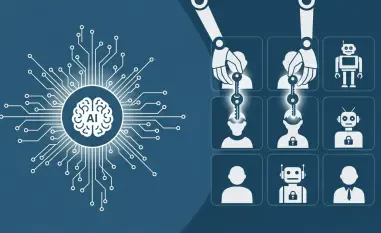The intricate relationship between businesses and generative AI (GenAI) applications is growing more complex as organizations increasingly adopt these technologies. While GenAI offers substantial benefits, including enhanced operational efficiency and innovative capabilities, it also introduces unique cybersecurity risks that organizations must address. The application of outcome-driven metrics (ODMs) serves as a crucial strategy to bridge the gap between technical security measures and executive-level oversight, facilitating effective management of these risks.
The Complex Relationship Between C-Suite and Cybersecurity
Bridging the Knowledge Gap
Navigating the often complex and sometimes strained relationship between the C-suite, board of directors, and cybersecurity function is akin to that between a car owner and a mechanic, wherein the non-expert relies on the expert’s knowledge. Yet, there remains an underlying wariness regarding the necessity and efficiency of the expert’s efforts. Outcome-driven metrics are introduced as a valuable tool to close this knowledge gap by providing clear visibility into how well an organization is protected from various technological risks, especially those related to GenAI investments. These metrics are designed to portray cybersecurity measures in a manner that is comprehensible and relevant to business leaders.
Reframing Cybersecurity in Business Terms
For cybersecurity to be integrated into business decision-making, it must be articulated in terms that resonate with business drivers such as operational continuity, regulatory compliance, customer and shareholder satisfaction, strategic partnerships, and eligibility for cyber insurance. Outcome-driven metrics reframe cybersecurity as an essential aspect of achieving these business objectives, rather than as a standalone technical concern. This practical and jargon-free approach ensures that discussions with board members and C-suite executives focus on the practical implications of cybersecurity measures and how well the organization meets its operational targets concerning GenAI. By doing so, ODMs provide a clearer understanding of the business value of cybersecurity investments.
Establishing GenAI-Specific ODMs
Collaboration with Business Leaders
Establishing effective GenAI-specific ODMs requires close collaboration with business leaders. This joint effort is essential to formulate metrics that accurately demonstrate the performance of security controls designed to reduce GenAI-related risks. When presenting these metrics to board members or C-suite executives, it is crucial to ensure that the conversation remains practical and devoid of technical jargon. By emphasizing the real-world impact of cybersecurity measures on business operations, organizations can foster a better understanding and appreciation of cybersecurity’s role in supporting organizational objectives.
Six Categories of Metrics
The article outlines six categories of metrics that guide the development of GenAI-specific ODMs. GenAI use-case risk assessments evaluate the security processes established to mitigate risks associated with deploying high-risk GenAI use cases without adequate assessment and treatment. Data readiness assesses an organization’s preparedness to leverage its existing data assets in GenAI applications while ensuring these assets are secure. GenAI application security focuses on safeguarding in-house developed GenAI applications throughout their life cycles. GenAI quality assurance entails rigorous quality assessments to validate data quality, thereby minimizing issues such as bias and hallucinations in large-language models (LLMs). Third-party cybersecurity risk management evaluates how well an organization safeguards against GenAI-related risks originating from vendors and partners. Finally, GenAI skills and training metrics demonstrate an organization’s commitment to equipping employees with the knowledge to securely and ethically develop and use GenAI applications.
Leveraging the AI TRiSM Framework
Introduction to AI TRiSM
The implementation of ODMs for managing GenAI risks is further supported by Gartner’s AI trust, risk, and security management (TRiSM) framework. This comprehensive solution set is designed to identify and mitigate AI-related risks, emphasizing the reliability, trustworthiness, security, and privacy of AI applications. The TRiSM framework aligns with the aforementioned categories of ODMs while providing additional insights into potential data sources for these metrics. By leveraging the TRiSM framework, organizations can ensure that their AI initiatives are robust, secure, and compliant with regulatory standards.
Six Technical Capabilities
The TRiSM framework encompasses six core technical capabilities necessary for the effective oversight of AI initiatives. Data protection focuses on safeguarding data used and generated by AI models, ensuring that sensitive information is secure throughout the AI life cycle. Content anomaly detection involves identifying discrepancies or anomalies in AI-generated content, which is critical for maintaining the integrity of AI outputs. Application security is concerned with protecting AI applications during their development and deployment phases, mitigating vulnerabilities that could be exploited. Model management and model operations oversee the life cycle of AI models, ensuring they operate as intended and are updated as necessary to adapt to changing conditions. Explainability and transparency enhance the understanding of AI model decisions and outputs, aiding in building trust with stakeholders. Lastly, adversarial resistance involves strengthening AI models against attacks designed to exploit their weaknesses, thereby ensuring the resilience of AI systems against malicious actions.
Negotiating Protection-Level Agreements (PLAs)
Aligning ODMs with Business Context
A critical aspect of implementing ODMs is the negotiation of protection-level agreements (PLAs), which align ODMs with agreed-upon performance or protection levels. These agreements facilitate clearer cybersecurity decisions by framing them within a business context, balancing protection levels with associated costs, and engaging business decision-makers. PLAs ensure that cybersecurity measures are not only technically sound but also aligned with the strategic goals of the organization.
Replacing Abstract Estimates with Measurable Results
PLAs move beyond abstract estimates of risk impact and likelihood by providing measurable and observable results. This transition from theoretical risk assessments to tangible outcomes reinforces the practical significance of ODMs. By focusing on measurable results, organizations can demonstrate the efficacy of their cybersecurity measures in a clear and quantifiable manner, thereby enhancing the credibility and accountability of their cybersecurity strategies. This approach fosters a collaborative environment where both technical teams and executive leaders are aligned in their objectives and efforts, promoting a unified approach to cybersecurity and risk management.
Crafting Business-Centric Narratives
Contextualizing ODM Data
To render ODMs actionable for board and executive-level audiences, it is essential to craft business-centric narratives that contextualize ODM data in relation to the organization’s strategic objectives. These narratives should translate complex technical data into insights that are directly relevant to business goals, ensuring that cybersecurity is perceived as a vital component of organizational success. By presenting ODM data in a manner that resonates with business leaders, organizations can foster a greater understanding and appreciation of the value of their cybersecurity investments.
Aligning Cybersecurity with Business Goals
The complex interplay between businesses and generative AI (GenAI) applications is deepening as more organizations adopt these advanced technologies. GenAI brings significant benefits like improved operational efficiency and innovative capabilities, but it also poses distinct cybersecurity risks that must be managed. One effective strategy for managing these risks involves the use of outcome-driven metrics (ODMs). These metrics act as a bridge between technical security measures and the strategic oversight at the executive level. ODMs help ensure that the risks associated with GenAI are comprehensively monitored and managed, promoting a balanced approach to leveraging the technology’s advantages while keeping potential vulnerabilities in check. Furthermore, implementing a robust framework of ODMs can aid organizations in maintaining a secure yet innovative environment, aligning their technological adoption with overarching business goals. As the adoption of GenAI continues to grow, the importance of such metrics cannot be overstated, making them a critical component of modern business strategy.













